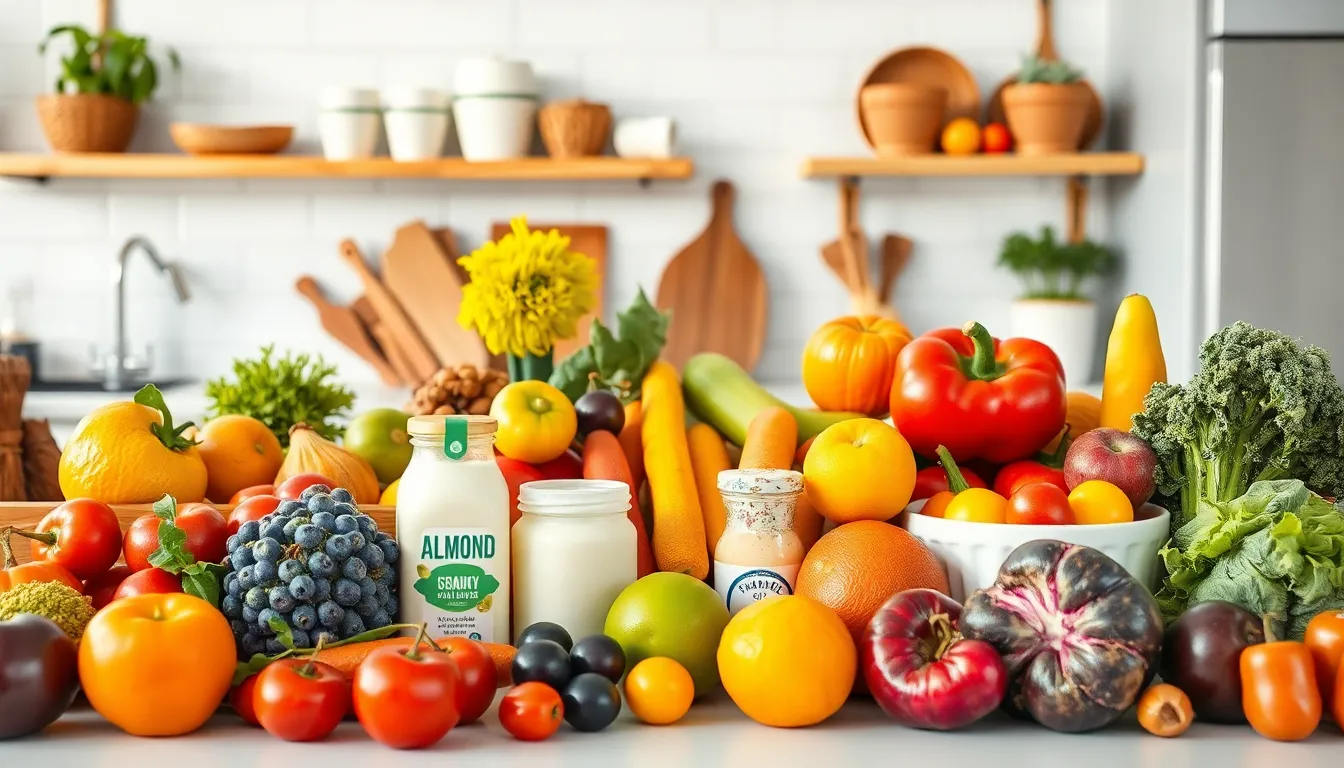Vegan cooking opens up a world of vibrant flavors and creative possibilities. With a growing interest in plant-based diets, many are eager to explore how to whip up delicious meals without animal products. Whether someone is a seasoned chef or a curious beginner, mastering vegan cooking can be both rewarding and fun.
In this article, readers will discover essential tips that make vegan cooking accessible and enjoyable. From ingredient substitutions to cooking techniques, these insights will help anyone elevate their culinary skills while embracing a healthier lifestyle. Dive into the exciting realm of vegan cuisine and unlock the secrets to creating mouthwatering dishes that even non-vegans will love.
Table of Contents
ToggleEssential Vegan Cooking Tips
These essential vegan cooking tips enhance culinary skills and streamline meal preparation. Stocking the pantry and investing in quality tools significantly contribute to the success of vegan cooking.
Stock Your Pantry
Stocking a vegan pantry requires a variety of ingredients to ensure meal diversity. Include the following items:
- Legumes: Beans, lentils, and chickpeas provide protein and fiber.
- Grains: Quinoa, rice, and oats form a nutritious base for meals.
- Nuts and Seeds: Almonds, chia seeds, and sesame seeds add healthy fats and crunch.
- Vegetable Broths: Use broths for flavoring soups and sauces.
- Herbs and Spices: Fresh basil, cumin, and turmeric enhance the taste and nutrition of dishes.
- Canned Tomatoes: They serve as a base for sauces and stews.
- Non-Dairy Milk: Options like almond, soy, and oat milk replace traditional dairy in recipes.
Keeping these essentials on hand simplifies meal prep and encourages creativity in the kitchen.
Invest in Quality Tools
Investing in quality tools makes vegan cooking efficient and enjoyable. Key tools to consider include:
- High-Quality Knife: A sharp, versatile knife ensures precision in chopping vegetables and fruits.
- Cutting Board: Use a sturdy, easy-to-clean cutting board for safe food prep.
- Blender: A powerful blender handles smoothies, soups, and sauces with ease.
- Food Processor: This tool simplifies tasks like chopping, mixing, and puréeing ingredients.
- Cast Iron Skillet: Versatile and long-lasting, a cast iron skillet distributes heat evenly for roasting and sautéing.
- Pressure Cooker: This gadget cooks beans and grains quickly, saving time and energy.
Quality tools streamline preparation and cooking processes, making plant-based meals more accessible and enjoyable.
Ingredient Substitutions

Ingredient substitutions play a crucial role in vegan cooking, allowing individuals to recreate traditional recipes without animal products. Below are some effective alternatives that enhance flavor and texture in vegan dishes.
Dairy Alternatives
Dairy alternatives provide creamy textures and rich flavors often associated with animal products. Consider these substitutions:
- Non-Dairy Milk: Almond milk, soy milk, oat milk, and coconut milk offer various flavors and consistencies suitable for cooking and baking.
- Vegan Butter: Use coconut oil, olive oil, or vegan margarine as substitutes for butter in recipes, ensuring a similar texture.
- Cashew Cream: Blend soaked cashews with water to create a smooth cream ideal for sauces or desserts.
- Plant-Based Yogurt: Choose almond, coconut, or soy yogurt for a tangy flavor in dressings and desserts.
Egg Replacements
- Flaxseed Meal: Mix one tablespoon of flaxseed meal with three tablespoons of water to form a gel-like consistency equivalent to one egg.
- Chia Seeds: Combine one tablespoon of chia seeds with three tablespoons of water for a similar binding effect as eggs.
- Applesauce: Use a quarter cup of unsweetened applesauce to replace one egg in baking, adding moisture and sweetness.
- Silken Tofu: Blend a quarter cup of silken tofu until smooth as an egg substitute in custards or baked goods, providing structure and creaminess.
Flavor Enhancements
Flavor enhances dishes and elevates vegan cooking. Employing the right ingredients can transform simple meals into culinary delights.
Herbs and Spices
Herbs and spices serve as essential components in vegan cuisine. Incorporating fresh herbs like basil, cilantro, and parsley adds brightness, while dried spices such as cumin, paprika, and turmeric introduce depth. Experimenting with blends like Italian seasoning or garam masala provides a base for diverse flavor profiles. Use herbs and spices judiciously; a small quantity can significantly enhance a dish without overwhelming it.
Umami Boosters
Umami, the fifth basic taste, enriches flavors in vegan dishes. Utilize ingredients like mushrooms, tomatoes, nutritional yeast, and miso to achieve this savory flavor. Mushrooms, particularly shiitake, impart a rich, meaty essence in soups or sauces. Nutritional yeast adds a cheesy flavor, making it ideal for pasta and popcorn. Miso offers saltiness and depth; adding it to dressings or marinades results in complex flavors. Combining these umami-rich ingredients creates a hearty and satisfying meal that resonates with all palates.
Meal Prep Strategies
Effective meal prep strategies simplify the vegan cooking process, making it easier to maintain a nutritious and varied diet. Two key methods that optimize this process are batch cooking and proper storage solutions.
Batch Cooking
Batch cooking allows individuals to prepare large quantities of food at once, minimizing cooking time throughout the week. He, she, or they can choose versatile base ingredients such as quinoa, brown rice, or lentils. She can also cook an array of roasted vegetables like sweet potatoes, bell peppers, and zucchini. Storing these prepared items separately allows for easy combinations during meal assembly.
Focusing on recipes that freeze well, such as soups, stews, and sauces, ensures quick meal options are readily available. For example, chili or vegan curry can be frozen in individual portions, while smoothie packs can be prepped with fruits and greens, ready for blending when needed.
Storage Solutions
Storing vegan meals properly enhances freshness and longevity. He or she should use airtight containers to prevent spoilage and maintain flavors. Glass containers are ideal for storing cooked grains and legumes, ensuring easy reheating and visibility.
Utilizing labeling systems with dates helps track food freshness, ensuring items are consumed before they expire. Freezer bags are beneficial for storing individual portions of soups or stews, maximizing space and convenience. Additionally, vacuum sealing can extend the shelf life of prepared meals significantly compared to regular storage methods.
Implementing these meal prep strategies enables smooth weeknight dinners, reducing the time spent in the kitchen while increasing dietary variety and nutrition.
Exploring vegan cooking opens up a world of flavors and creativity. By stocking a diverse pantry and investing in quality tools, anyone can simplify their cooking experience. Embracing ingredient substitutions allows for the recreation of beloved dishes while maintaining deliciousness.
Flavor enhancements through herbs and spices can elevate meals, making them satisfying and enjoyable for everyone. Meal prep strategies like batch cooking not only save time but also ensure a nutritious and varied diet. With these tips, anyone can confidently navigate the vibrant landscape of vegan cuisine and delight in the art of plant-based cooking.


